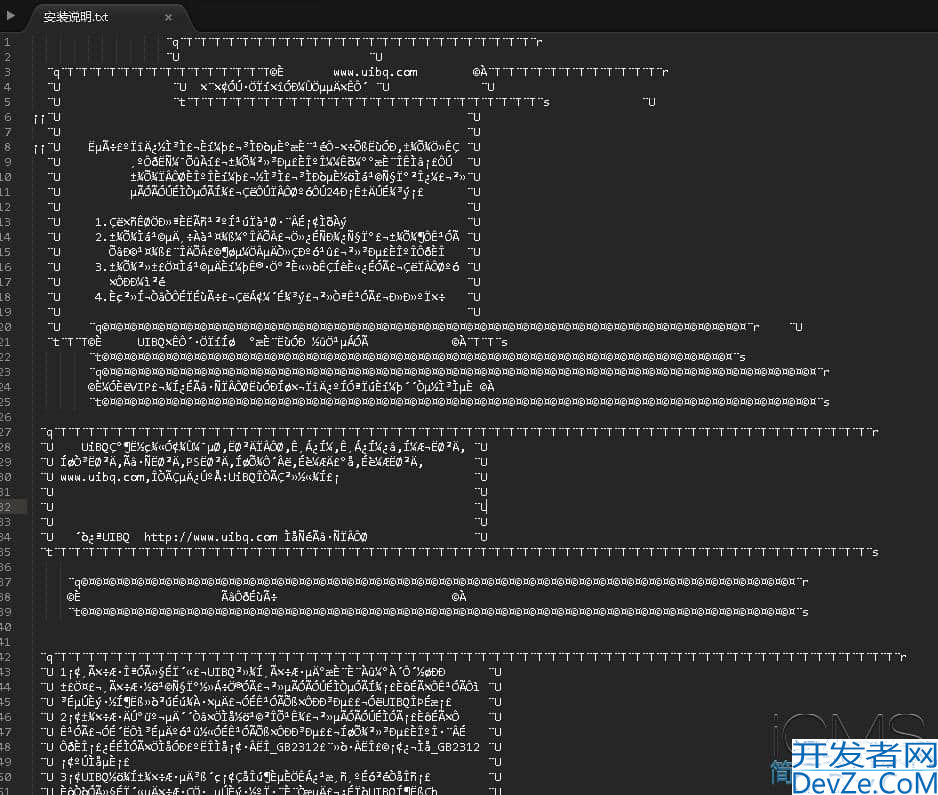SpringBoot进行模块化开发的5种组织方式小结
目录
- 一、Maven/Gradle多模块项目
- 核心理念
- 实现方式
- 优缺点分析
- 适用场景
- 二、基于Spring Profiles的功能模块化
- 核心理念
- 实现方式
- 优缺点分析
- 适用场景
- 三、基于Spring Boot Starter的模块化
- 核心理念
- 实现方式
- 优缺点分析
- 适用场景
- 四、基于DDD的模块化架构
- 核心理念
- 实现方式
- 优缺点分析
- 适用场景
- 五、基于微服务的模块化
- 核心理念
- 实现方式
- 优缺点分析
- 适用场景
- 六、方案对比
- 七、总结
在企业级应用开发中,随着业务复杂度的不断提升,单体应用往往变得臃肿难以维护。
模块化开发作为解决复杂性的关键策略,能够有效提升代码的可维护性、可扩展性和团队协作效率。
SpringBoot作为Java领域流行的应用开发框架,提供了多种模块化组织方式,以适应不同的业务场景和团队需求。
本文将介绍SpringBoot模块化开发的5种组织方式。
一、Maven/Gradle多模块项目
核心理念
Maven/Gradle多模块项目是最基础、最常用的模块化方式,通过将应用拆分为多个子模块,每个模块负责特定的功能,共同构成一个完整的应用。这种方式保持了单体应用的部署简便性,同时获得了代码组织的清晰度。
实现方式
1. 项目结构
my-app/
├── pom.XML (父POM)├── my-app-core/│ ├── pom.xml│ └── src/├── my-app-service/│ ├── pom.xml│ └── src/├── my-app-web/│ ├── pom.xml│ └── src/└── my-app-api/ ├── pom.xml └── src/
2. 父POM配置
<project>
<modelVersion>4.0.0</modelVersion>
<groupId>com.example</groupId>
<artifactId>my-app</artifactId>
<version>1.0.0</version>
<packaging>pom</packaging>
<modules>
<module>my-app-core</module>
<module>my-app-service</module>
<module>my-app-web</module>
<module>my-app-api</module>
</modules>
<properties>
<java.version>11</java.version>
<spring-boot.version>2.6.3</spring-boot.version>
</properties>
<dependencyManagement>
<dep编程客栈endencies>
<dependency>
<groupId>org.springframework.boot</groupId>
<artifactId>spring-boot-dependencies</artifactId>
<version>${spring-boot.version}</version>
<type>pom</type>
<scope>import</scope>
</dependency>
</dependencies>
</dependencyManagement>
<build>
<plugins>
<plugin>
<groupId>org.apache.maven.plugins</groupId>
<artifactId>maven-compiler-plugin</artifactId>
<version>3.8.1</version>
<configuration>
<source>${java.version}</source>
<target>${java.version}</target>
</configuration>
</plugin>
</plugins>
</build>
</project>
3. 子模块POM示例(my-app-web)
<project>
<modelVersion>4.0.0</modelVersion>
<parent>
<groupId>com.example</groupId>
<artifactId>my-app</artifactId>
<version>1.0.0</version>
</parent>
<artifactId>my-app-web</artifactId>
<dependencies>
<!-- 依赖其他内部模块 -->
<dependency>
<groupId>com.example</groupId>
<artifactId>my-app-service</artifactId>
<version>${project.version}</version>
</dependency>
<!-- Spring Boot Web -->
<dependency>
<groupId>org.springframework.boot</groupId>
<artifactId>spring-boot-starter-web</artifactId>
</dependency>
</dependencies>
<build>
<plugins>
<plugin>
<groupId>org.springframework.boot</groupId>
<artifactId>spring-boot-maven-plugin</artifactId>
<executions>
<execution>
<goals>
<goal>repackage</goal>
</goals>
</execution>
</executions>python
</plugin>
</plugins>
</build>
</project>
4. 模块之间的依赖关系
- my-app-core: 包含通用工具类、基础配置等
- my-app-service: 包含业务服务实现,依赖core模块
- my-app-api: 包含API定义,可能被其他项目引用
- my-app-web: 包含Web控制器,依赖service模块
优缺点分析
优点:
- 结构清晰,各模块职责明确
- 支持模块间代码复用
- 构建、测试和发布过程统一管理
- 保持了单体应用的简单部署方式
- IDE支持良好
缺点:
- 所有模块仍然是一个整体部署单元
- 模块间边界不够严格,容易产生依赖混乱
- 随着项目增长,构建时间可能变长
适用场景
• 中小型应用,代码量适中
• 团队规模编程客栈不大,沟通成本较低
• 需要清晰的代码组织但又不希望引入分布式复杂性
• 作为向微服务架构演进的过渡阶段
二、基于Spring Profiles的功能模块化
核心理念
利用Spring的Profiles机制,在同一代码库中定义不同的功能模块,并通过配置文件激活或禁用特定功能。
这种方式不需要物理拆分代码,而是通过逻辑分组和条件加载实现功能模块化。
实现方式
1. 定义不同功能模块的配置类
@Configuration
@Profile("payment")
public class PaymentConfig {
@Bean
public PaymentService paymentService() {
return new PaymentServiceImpl();
}
@Bean
public PaymentRepository paymentRepository() {
return new PaymentRepositoryImpl();
}
}
@Configuration
@Profile("notification")
public class NotificationConfig {
@Bean
public NotificationService notificationService() {
return new EmailNotificationService();
}
@Bean
public NotificationTemplate notificationTemplate() {
return new StandardNotificationTemplate();
}
}
2. 在应用属性中激活特定模块
# application.properties spring.profiles.active=core,payment,notification
或者通过环境变量:
java -jar app.jar --spring.profiles.active=core,payment
3. 在代码中使用条件注解
@Service
@Profile("payment")
public class PaymentServiceImpl implements PaymentService {
// 实现代码
}
@Controller
@Profile("admin")
@RequestMapping("/admin")
public class AdminController {
// 管理员功能
}
4. 环境特定配置
# application-payment.properties payment.gateway.url=https://payment.example.com payment.timeout=30
# application-notification.properties notification.email.host=smtp.example.com notification.sms.enabled=true
优缺点分析
优点:
- 无需物理拆分代码,实现简单
- 可根据部署环境灵活启用/禁用功能
- 共享基础设施代码
- 便于实现功能的A/B测试或灰度发布
缺点:
- 模块边界不够清晰,容易导致耦合
- 随着功能增多,单个代码库仍会变得庞大
- 所有功能模块仍在同一个部署单元中
- 不便于不同团队并行开发
适用场景
• 需要根据客户需求定制功能的产品
• 同一应用需要部署到不同环境且功能略有差异
• 需要进行功能试验或灰度发布
• 功能相对独立但又不希望创建多个项目
三、基于Spring Boot Starter的模块化
核心理念
Spring Boot Starter是Spring生态系统的一个核心特性,它通过自动配置和依赖管理简化了模块集成。
通过创建自定义Starter,可以将功能封装为独立模块,实现可插拔的组件化架构。
实现方式
1. 创建自定义Starter的项目结构
my-feature-spring-boot-starter/
├── pom.xml└── src/main/java/ └── com/example/feature/ ├── FeatureAutoConfiguration.java ├── FeatureProperties.java ├── service/ │ └── FeatureService.java └── META-INF/ └── spring.factories
2. Starter的POM文件
<project>
<modelVersion>4.0.0</modelVersion>
<groupId>com.example</groupId>
<artifactId>my-feature-spring-boot-starter</artifactId>
<version>1.0.0</version>
<properties>
<java.version>11</java.version>
<spring-boot.version>2.6.3</spring-boot.version>
</properties>
<dependencies>
<dependency>
<groupId>org.springframework.boot</groupId>
<artifactId>spring-boot-starter</artifactId>
</dependency>
<dependency>
<groupId>org.springframework.boot</groupId>
<artifactId>spring-boot-configuration-processor</artifactId>
<optional>true</optional>
</dependency>
</dependencies>
<dependencyManagement>
<dependencies>
<dependency>
<groupId>org.springframework.boot</groupId>
<artifactId>spring-boot-dependencies</artifactId>
<version>${spring-boot.version}</version>
<type>pom</type>
<scope>import</scope>
</dependency>
</dependencies>
</dependencyMaandroidnagement>
</project>
3. 自动配置类
@Configuration
@ConditionalOnClass(FeatureService.class)
@EnableConfigurationProperties(FeatureProperties.class)
public class FeatureAutoConfiguration {
private final FeatureProperties properties;
public FeatureAutoConfiguration(FeatureProperties properties) {
this.properties = properties;
}
@Bean
@ConditionalOnMissingBean
public FeatureService featureService() {
return new FeatureService(properties.getApiKey(), properties.isEnabled());
}
@Bean
@ConditionalOnProperty(prefix = "feature", name = "advanced-mode", havingValue = "true")
public AdvancedFeatureService advancedFeatureService() {
return new AdvancedFeatureService();
}
}
4. 配置属性类
@ConfigurationProperties(prefix = "feature")
public class FeatureProperties {
/**
* API密钥用于访问特性服务
*/
private String apiKey;
/**
* 是否启用该特性
*/
private boolean enabled = true;
/**
* 是否开启高级模式
*/
private boolean advancedMode = false;
// getter和setter方法
}
5. 注册自动配置(spring.factories文件)
# 自动配置类 org.springframework.boot.autoconfigure.EnableAutoConfiguration=\ com.example.feature.FeatureAutoConfiguration
6. 在应用中使用自定义Starter
<dependency>
<groupId>com.example</groupId>
<artifactId>my-feature-spring-boot-starter</artifactId>
<version>1.0.0</version>
</dependency>
# 在应用配置文件中 feature.api-key=your-api-key feature.enabled=true feature.advanced-mode=false
@Service
public class MyService {
private final FeatureService featureService;
@Autowired
public MyService(FeatureService featureService) {
this.featureService = featureService;
}
public void DOSomething() {
featureService.processFeature();
}
}
优缺点分析
优点:
- 实现真正的"按需装配",组件可插拔
- 模块有明确的边界和API
- 便于共享和复用
- 支持条件化配置
- 符合Spring Boot的设计理念
缺点:
- 创建Starter的初始成本较高
- 版本管理较为复杂
- 需要考虑向后兼容性
- 调试相对困难
适用场景
• 需要在多个项目中复用的通用功能
• 提供给第三方使用的功能模块
• 企业内部的共享基础设施
• 需要高度可配置性的功能
四、基于DDD的模块化架构
核心理念
领域驱动设计(DDD)是一种软件开发方法 论,强调将业务领域概念直接映射到软件设计中。基于DDD的模块化将系统按业务领域边界(Bounded Context)划分为多个模块,每个模块都有自己的领域模型和业务规则。
实现方式
1. 项目结构
my-app/
├── pom.xml├── common/│ ├── pom.xml│ └── src/├── order/│ ├── pom.xml│ ├── src/main/java/com/example/order/│ │ ├── application/│ │ ├── domain/│ │ ├── infrastructure/│ │ └── interfaces/│ └── src/test/├── payment/│ ├── pom.xml│ ├── src/main/java/com/example/payment/│ │ ├── application/│ │ ├── domain/│ │ ├── infrastructure/│ │ └── interfaces/│ └── src/test/└── user/ ├── pom.xml └── src/...
2. 领域模块内部结构
每个领域模块遵循分层架构:
• domain: 包含实体、值对象、领域服务和领域事件
• application: 包含应用服务、命令和查询处理器
• infrastructure: 包含持久化实现、外部服务集成
• interfaces: 包含API控制器、DTO和转换器
3. 领域模型示例(Order模块)
// domain层
package com.example.order.domain.model;
@Entity
public class Order {
@Id
private OrderId id;
private CustomerId customerId;
private Money totalAmount;
private OrderStatus status;
private Set<OrderItem> items;
public Order(CustomerId customerId, Set<OrderItem> items) {
this.id = new OrderId(UUID.randomUUID());
this.customerId = customerId;
this.items = items;
this.status = OrderStatus.CREATED;
this.totalAmount = calculateTotalAmount();
}
public void confirm() {
if (status != OrderStatus.CREATED) {
throw new InvalidOrderStateException("Cannot confirm order in state: " + status);
}
status = OrderStatus.CONFIRMED;
// 发布领域事件
DomainEventPublisher.publish(new OrderConfirmedEvent(this.id));
}
private Money calculateTotalAmount() {
return items.stream()
.map(item -> item.getPrice().multiply(item.getQuantity()))
.reduce(MoRRZIhDChjUney.ZERO, Money::add);
}
// 其他业务方法...
}
4. 应用服务示例
// application层
package com.example.order.application.service;
@Service
@Transactional
public class OrderApplicationService {
private final OrderRepository orderRepository;
private final CustomerService customerService;
@Autowired
public OrderApplicationService(
OrderRepository orderRepository,
CustomerService customerService) {
this.orderRepository = orderRepository;
this.customerService = customerService;
}
public OrderId createOrder(CreateOrderCommand command) {
// 验证客户
CustomerId customerId = new CustomerId(command.getCustomerId());
if (!customerService.exists(customerId)) {
throw new CustomerNotFoundException(customerId);
}
// 创建订单项
Set<OrderItem> items = command.getItems().stream()
.map(this::toOrderItem)
.collect(Collectors.toSet());
// 创建订单
Order order = new Order(customerId, items);
// 保存订单
orderRepository.save(order);
return order.getId();
}
public void confirmOrder(ConfirmOrderCommand command) {
OrderId orderId = new OrderId(command.getOrderId());
Order order = orderRepository.findById(orderId)
.orElseThrow(() -> new OrderNotFoundException(orderId));
order.confirm();
orderRepository.save(order);
}
private OrderItem toOrderItem(OrderItemDto dto) {
return new OrderItem(
new ProductId(dto.getProductId()),
dto.getQuantity(),
new Money(dto.getPrice())
);
}
}
5. 模块间通信
// 在支付模块中集成订单模块
package com.example.payment.application.service;
@Service
public class PaymentService {
private final PaymentRepository paymentRepository;
private final OrderClient orderClient; // 防腐层
@Autowired
public PaymentService(
PaymentRepository paymentRepository,
OrderClient orderClient) {
this.paymentRepository = paymentRepository;
this.orderClient = orderClient;
}
public PaymentId processPayment(ProcessPaymentCommand command) {
// 从订单模块获取订单
Order order = orderClient.getOrder(command.getOrderId());
// 验证订单状态
if (order.getStatus() != OrderStatus.CONFIRMED) {
throw new InvalidOrderStateException("Cannot process payment for order: " + order.getId());
}
// 创建支付
Payment payment = new Payment(
new OrderId(order.getId()),
order.getTotalAmount(),
command.getPaymentMethod()
);
// 处理支付逻辑...
paymentGateway.process(payment);
// 保存支付记录
paymentRepository.save(payment);
return payment.getId();
}
}
优缺点分析
优点:
- 模块边界基于业务领域,更符合业务现实
- 高内聚、低耦合,维护性好
- 适合大型复杂系统
- 支持团队自治
- 领域模型表达力强,便于与业务人员沟通
缺点:
- 学习曲线陡峭
- 初期设计成本高
- 可能导致代码重复(每个领域有自己的模型)
- 需要精心设计模块间通信
适用场景
• 业务复杂度高的企业应用
• 长期维护的核心系统
• 大型团队协作开发
• 有明确领域边界的系统
五、基于微服务的模块化
核心理念
微服务架构将应用拆分为多个独立部署的服务,每个服务负责特定的业务功能,并通过轻量级通信机制(如HTTP API)或者其他RPC框架(如Dubbo)进行交互。这种方式使得服务可以独立开发、测试、部署和扩展。
实现方式
1. 服务划分
将系统按业务能力划分为多个独立服务:
电商系统/
├── 用户服务 (user-service)├── 商品服务 (product-service)├── 订单服务 (order-service)├── 支付服务 (payment-service)├── 库存服务 (inventory-service)└── API网关 (api-gateway)
2. 单个微服务的项目结构
order-service/
├── pom.xml├── src/│ ├── main/│ │ ├── java/│ │ │ └── com/example/orderservice/│ │ │ ├── OrderServiceApplication.java│ │ │ ├── controller/│ │ │ ├── service/│ │ │ ├── repository/│ │ │ ├── model/│ │ │ └── client/│ │ └── resources/│ │ └── application.yml│ └── test/└── dockerfile
3. 服务间通信(REST API)
// 在订单服务中调用产品服务
@Service
public class OrderService {
private final OrderRepository orderRepository;
private final ProductClient productClient;
@Autowired
public OrderService(
OrderRepository orderRepository,
ProductClient productClient) {
this.orderRepository = orderRepository;
this.productClient = productClient;
}
public Order createOrder(OrderRequest request) {
// 验证产品是否存在且有库存
for (OrderItemRequest item : request.getItems()) {
ProductResponse product = productClient.getProduct(item.getProductId());
if (product == null) {
throw new ProductNotFoundException(item.getProductId());
}
}
// 创建订单
Order order = new Order();
order.setCustomerId(request.getCustomerId());
order.setItems(mapToOrderItems(request.getItems()));
order.setStatus(OrderStatus.CREATED);
return orderRepository.save(order);
}
}
4. Feign客户端定义
@FeignClient(name = "product-service")
public interface ProductClient {
@GetMapping("/api/products/{productId}")
ProductResponse getProduct(@PathVariable("productId") String productId);
@GetMapping("/api/products")
List<ProductResponse> getAllProducts();
@PostMapping("/api/products/{productId}/reserve")
void reserveProduct(@PathVariable("productId") String productId, @RequestBody ReserveRequest request);
}
5. 服务注册与发现(Eureka)
# application.yml
spring:
application:
name: order-service
eureka:
client:
serviceUrl:
defaultZone: http://eureka-server:8761/eureka/
instance:
preferIpAddress: true
6. API网关配置(Spring Cloud Gateway)
# gateway application.yml
spring:
cloud:
gateway:
routes:
- id: user-service
uri: lb://user-service
predicates:
- Path=/api/users/**
- id: product-service
uri: lb://product-service
predicates:
- Path=/api/products/**
- id: order-service
uri: lb://order-service
predicates:
- Path=/api/orders/**
优缺点分析
优点:
- 服务独立部署和扩展
- 技术栈可以多样化
- 故障隔离
- 适合大型团队并行开发
- 支持按需扩展高负载服务
缺点:
- 分布式系统复杂性
- 运维挑战
- 跨服务调试困难
- 数据一致性难保证
- 网络延迟和故障处理
适用场景
• 大型复杂系统
• 需要高可扩展性的场景
• 多团队协作开发
• 对不同组件有不同扩展需求
六、方案对比
| 模块化方式 | 复杂度 | 团队协作 | 部署独立性 | 开发效率 | 适合规模 |
|---|---|---|---|---|---|
| Maven多模块 | 低 | 中 | 低 | 高 | 小到中型 |
| Profiles功能模块 | 低 | 低 | 低 | 高 | 小型 |
| Spring Boot Starter | 中 | 中 | 中 | 中 | 中型 |
| DDD模块化 | 高 | 高 | 中 | 中 | 中到大型 |
| 微服务 | 高 | 高 | 高 | 低 | 大型 |
七、总结
SpringBoot模块化开发提供了多种组织方式,每种方式都有其适用场景和优缺点。
选择合适的模块化策略应考虑项目规模、团队结构、业务复杂度和未来演进方向。
最重要的是,模块化应该是渐进式的过程,随着项目的发展不断调整和优化模块结构,以适应不断变化的业务需求和技术环境。
无论选择哪种模块化方式,清晰的模块边界、良好的接口设计和适当的耦合度控制都是成功的关键因素。
通过合理的模块化,我们可以构建出更加灵活、可维护且适应未来变化的应用。
以上就是SpringBoot进行模块化开发的5种组织方式小结的详细内容,更多关于SpringBoot模块化的资料请关注编程客栈(www.devze.com)其它相关文章!







 加载中,请稍侯......
加载中,请稍侯......
精彩评论